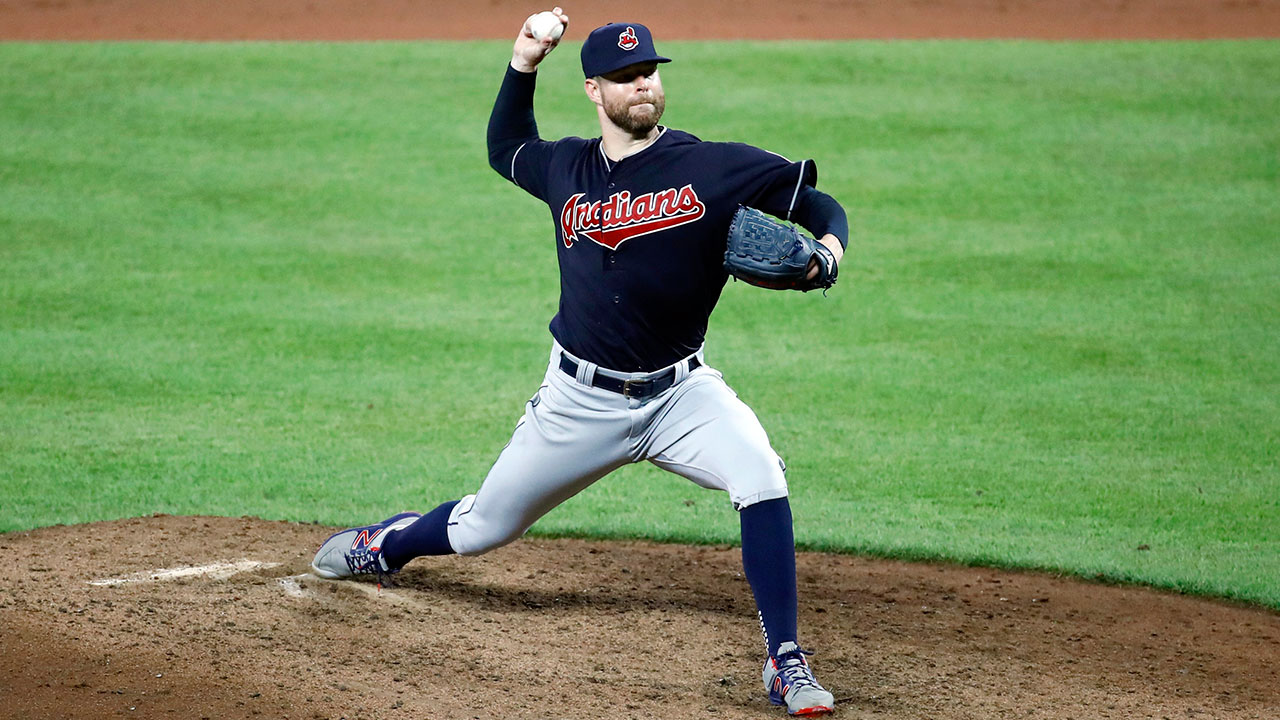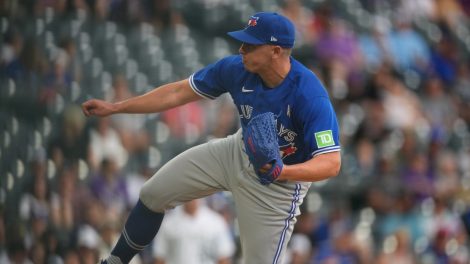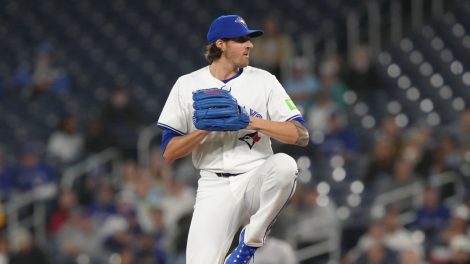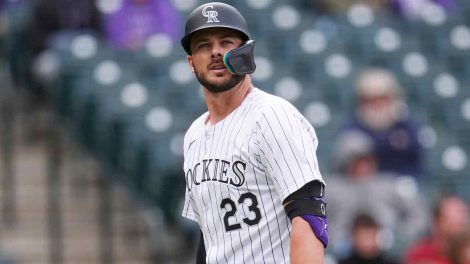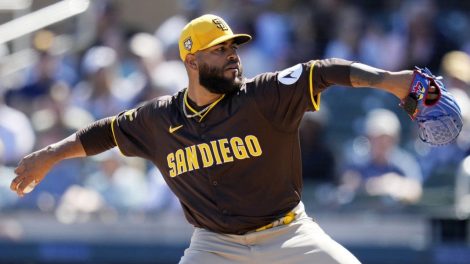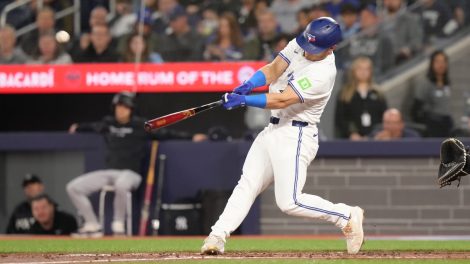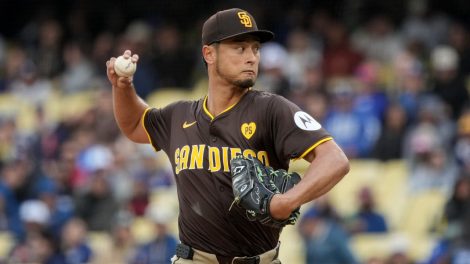LAKE BUENA VISTA, FLA. – By late summer, it became apparent that this was going to be a tough year to pick an American League Cy Young Award winner.
Atop the ballot, Chris Sale and Corey Kluber both put together deserving seasons and some tough choices loomed further down the five-player ballot. Sifting through the best pitching performances of the year will require some tough choices.
As I write this it’s Oct. 2, the day after the regular season ended. Voters make their selections based on regular season performances alone, so as I rank my ballot I have no idea who will do well in the playoffs and who will struggle. With that said, let’s get started…
Votes accounted for: 0
Pitchers under consideration: 417
Four hundred and seventeen players pitched in the American League this year, from Sale and Kluber to Twins backup catcher Chris Gimenez. With only five spots available on the ballot, I’m going to have to cross off 412 names.
I’m going to start by eliminating starters who didn’t qualify for the ERA title. These days, that leaves a select group.
Only 23 AL starters qualified for the ERA title this year: Chris Sale, Ervin Santana, Justin Verlander, Corey Kluber, Rick Porcello, Chris Archer, Marcus Stroman, Carlos Carrasco, Luis Severino, Marco Estrada, Martin Perez, Ricky Nolasco, Jason Hammel, Kevin Gausman, Alex Cobb, Masahiro Tanaka, Trevor Bauer, Jason Vargas, Drew Pomeranz, Dylan Bundy, Andrew Cashner, Michael Fulmer and Sonny Gray. I’m going to have to cross out at least 18 of these pitchers—more if I vote for a reliever (more on that later).
Votes accounted for: 0
Pitchers under consideration: 23
We’ll get to some more advanced stats later, but for now the basics will work. AL starters combined for a 4.56 ERA in 2017. I’m comfortable eliminating the seven remaining starters whose ERAs exceeded league average. That eliminates Jason Hammel, Marco Estrada, Ricky Nolasco, Martin Perez, Kevin Gausman, Masahiro Tanaka and Rick Porcello.
Now we’re down to 16 starters, half of whom pitched fewer than 180 innings. I’m not opposed to voting for a player who lags behind in innings—Clayton Kershaw belongs on NL ballots, for example—but I’m comfortable crossing off Alex Cobb, Trevor Bauer, Jason Vargas, Drew Pomeranz, Dylan Bundy, Andrew Cashner, Michael Fulmer and Sonny Gray. They’ve had good seasons, just not Cy Young seasons.
That leaves us with eight pitchers: Sale, Kluber, Severino, Carrasco, Archer, Verlander, Stroman and Santana. Eventually, I’ll rank those pitchers, but first there’s another possibility to consider.
[relatedlinks]
Votes accounted for: 0
Pitchers under consideration: 8 plus relievers
Some AL relievers had incredible seasons, most notably Craig Kimbrel, who struck out more than half of the hitters he faced on his way to 35 saves and a 1.43 ERA. He pitched just 69 innings, but they were high-leverage innings; he led AL relievers in win probability added by a wide margin.
All told Kimbrel had a great year that deserves recognition, but would you take those 69 innings over the 200-plus innings from a starter with an ERA around 3.00? Personally I value the contributions of the starter more.
Votes accounted for: 0
Pitchers under consideration: 8
We’re back to eight starters: Sale, Kluber, Severino, Carrasco, Archer, Verlander, Stroman and Santana. Sale and Kluber are going to rank first and second in some order. That leaves three remaining spots for the rest.
Votes accounted for: 2
Pitchers under consideration: 6
At this point we’ve narrowed the field to six pitchers, each of who had a great season. There’s room for three more on the ballot, which means three have to go. This is where it gets really tough.
Chris Archer got off to a great start, but he posted a 7.48 ERA in six September starts to finish with a 4.07 mark. Despite some great strikeout and walk numbers, he allowed 27 home runs on the year. Given the other pitchers deserving consideration, Archer isn’t making the cut.
Votes accounted for: 2
Pitchers under consideration: 5
Having gotten this far, I want to focus on what pitchers can control. We’re talking what actually happened, not what should have happened. I’m not worried about who projects to be the best or who has the best track record. The question I’m going to try to answer here is, “Who had the best season in 2017?”
Among those five, Severino has the most strikeouts and the best ERA. He also provided consistency, limiting the opposition to one run on 17 occasions.
Granted, Severino’s comparable to Carrasco, with just four more strikeouts and the exact same number of runs and home runs allowed. By wins above replacement, they’re just about even.
But the AL East is a tougher division to pitch in, as reflected by the average opponents OPS of .756. Plus, Severino allowed 23 fewer hits (and deservedly so based on quality of contact allowed). For me, he’s ahead of Carrasco.
[snippet id=3305549]
Votes accounted for: 3
Pitchers under consideration: 4
Of the remaining four pitchers, Carrasco has the most strikeouts, the fewest walks and he’s tied for the fewest home runs. That’s enough to earn a fourth-place finish.
Votes accounted for: 4
Pitchers under consideration: 3
At this point we’re down to Verlander, Santana and Stroman. Though Santana had a great year, I’m ready to cross him off. His strikeout and walk numbers look like Stroman’s but Stroman was much better at generating ground balls and preventing home runs. Verlander has just about the same runs allowed and innings total, but he strikes out far more hitters and does a better job of keeping the ball in the park.
Votes accounted for: 4
Pitchers under consideration: 2
We’re down to Stroman and Verlander now. A look at the advanced stats suggests Verlander has the edge. He has the edge in WAR according to both FanGraphs and Baseball-Reference. He faced tougher hitters, as measured by OPS. Like Stroman, he spent much of the year with a poor defence behind him.
Plus, on a basic level Verlander faced 15 more hitters than Stroman and recorded 15 more outs. Verlander allowed 80 runs, of which 77 were earned, while Stroman allowed 82 runs, of which 69 were earned. Verlander allowed six more home runs, but 31 fewer hits. Verlander allowed 76 hitters to reach via walk or hit by pitch, while Stroman allowed 68. The biggest difference comes in the strikeout column, where Verlander’s ahead by 55. All told, he’s ahead of Stroman.
Votes accounted for: 5
Pitchers under consideration: 5
The bottom of the ballot’s now set with Severino, Carrasco and Verlander ranked 3-5.
Now we return to the question of Kluber vs. Sale. Sale has the edge in innings, and an incredible total of 308 strikeouts. But Kluber’s every bit as good at controlling the strike zone, with 265 strikeouts compared to just 36 walks. Advanced metrics like wins above replacement confirm that the race is as close as it seems. Both candidates are deserving.
Ultimately I’m going with Kluber here. Sale allowed 18 more earned runs (17 more in total) while pitching just 10.2 more innings. All told, I believe Kluber provided the better combination of quality and quantity, so he’s atop my ballot.
1) Corey Kluber
2) Chris Sale
3) Luis Severino
4) Carlos Carrasco
5) Justin Verlander

